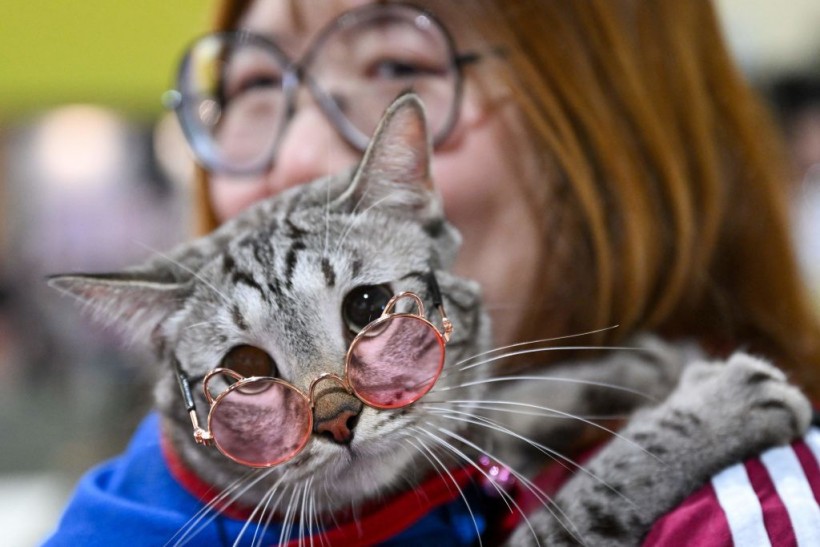Domestic cats are known for their keen sense of smell, which helps them find food, identify friends and foes, and track their environment.
But how do they achieve such a remarkable feat? Scientists have recently discovered that the secret lies in the complex structure of their nasal airway, which resembles a highly efficient and dual-purposed chemical analysis equipment.
The cat's nose as a gas chromatograph
 (Photo : MOHD RASFAN/AFP via Getty Images)
(Photo : MOHD RASFAN/AFP via Getty Images)

A gas chromatograph is a laboratory instrument that can separate and identify different components of a mixture of gases or vapors, as per Phys.org.
It works by passing the mixture through a long and narrow tube, called a column, that is coated with a material that selectively interacts with the different components.
As the mixture travels along the column, the components separate based on their affinity to the coating material and their volatility.
The separated components then reach a detector at the end of the column, where they are identified and quantified.
Researchers from Ohio State University have found that the cat nose functions in a similar way, but with some unique features.
They created a 3D computer model of the cat nose based on micro-CT scans of a cat's head and simulated how an inhalation of air containing common cat food odors would flow through the nasal cavity.
They found that the air splits into two streams: one that passes through a complex labyrinth of tightly coiled bony structures, called turbinates, and another that bypasses them and goes directly to the olfactory region.
The turbinates act like parallel coiled columns in a gas chromatograph, separating and delivering different odor components to different parts of the olfactory region.
This allows the cat to detect and identify a wide range of odors with high sensitivity and specificity.
The bypass stream, on the other hand, delivers the odorant quickly and efficiently to the olfactory region, ensuring a rapid response to important stimuli.
Also Read: German Town Bans Cats From Going Outdoors to Save Endangered Crested Lark
The evolutionary advantage of the cat nose
The researchers suggest that the cat nose evolved to have such a sophisticated structure because of its compact size and adaptability to diverse environments, as per Lab Manager.
Unlike other animals with long snouts, such as dogs or alligators, cats have short and round heads, which limits the space for nasal structures.
To overcome this constraint, cats developed a coiled turbinate system that maximizes the surface area for olfaction without compromising airflow.
Moreover, cats are highly adaptable animals that can live in various habitats, from deserts to forests.
This means they need to cope with different climatic conditions and food sources, which require a versatile olfactory system.
The cat nose can achieve this by having two flow streams that serve different purposes: one for cleansing and humidifying the air, and another for delivering the odorant.
The researchers hope that their findings can inspire improvements to the gas chromatographs used in various fields, such as environmental monitoring, forensic science, and medical diagnosis.
They also plan to study other animals' noses to understand how they differ from cats' noses and what advantages they may offer.
Related article: Cats Imitate Owners' Habits, Says Study
© 2024 NatureWorldNews.com All rights reserved. Do not reproduce without permission.





